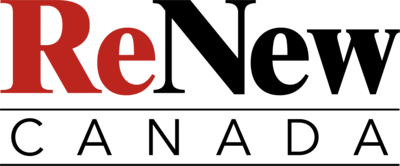RC118 MayJune 2025 - Magazine - Page 31

and 38 underpasses along the Trans-Canada Highway
are the standard—and the global model. The need for an
infrastructure solution on Highway 1 existed for decades.
The wildlife-vehicle collision statistics con昀椀rmed this need.
Wildlife-vehicle collisions not only lead to fatalities and
serious injuries but also endanger some species and put
them at risk of extinction, which
threatens Canada’s biodiversity. The
Alberta Ministry of Transportation
and Economic Corridors looked to
the Ban昀昀 National Park success story
when it decided a similar solution
could work on one of the provinces’
busiest roads. DIALOG design
agreed. And, after winning the tender
in 2018, heeded the call.
DIALOG relied on its past
experience, designing and
successfully implementing seven
wildlife overpasses working with
Parks Canada, to construct Alberta’s
昀椀rst provincially managed overpass.
Not by design, but Robson has
now spent his career working on
bridge designs like this one in the
picturesque Bow Valley, working on
his 昀椀rst of these projects back in Ban昀昀
National Park in 2008.
Over—not the under—pass
This 38-kilometre stretch of the
Trans-Canada Highway east of
Ban昀昀 National Park is one of the
busiest in Alberta. The roadway in
the Bow River Valley is travelled
by both Calgary commuters and
tourists alike. On average, the
highway exceeds 22,000 vehicles a
day. On weekends, and in the peak
of summer, that number surpasses
30,000. Historically, it has also been
rife with wildlife vehicle collisions.
The business case and conversations
championing an overpass, combined
with fencing, on this scenic route in the lowlands of the
Rocky Mountains began decades ago. It started with the
data: analyzing years of tra昀케c statistics, collision reports
and studying wildlife migration patterns.
DIALOG worked with Thurber Engineering and
Egis Group, along with the client (Alberta Ministry of
Transportation and Economic Corridors), and consultation
with the Indigenous community, to develop an innovative
solution that was not only structurally-sound, but also
blended into the natural landscape and topography of the
land to provide a safer route for migrating wildlife—both
big and small—from grizzly bears and elk to western toads
and salamanders.
RENEWCANADA.NET
One of the challenges the project presented, according to
Robson—and that was mandated as part of the tender—is
that the four-lane highway (two in either direction) had to
remain operational throughout construction.
“Luckily, the site was large enough that there was room
to create an on-site detour where, depending on which arch
was being built, there was enough land that two lanes of
tra昀케c could be rerouted over the median to the other side
of the highway in order to maintain four lanes at all times,”
explains Robson. “Then, when the 昀椀rst arch was completed,
they were able to reverse the process and move the tra昀케c
back to the other side.”
Location, location, location
Picking the right place to build this structure was not an
exact science, but determining its location was a crucial step
in the planning process and required extensive research on
the current habitat habits and movement corridors, wildlife-vehicle collision data, and geotechnical and many other
factors to consider. DIALOG worked with ecologists and
wildlife biologists to take this data and eventually pin a spot
on Google Maps.
“There are a lot of di昀昀erent factors that go into play when
determining the best location for one of these structures,”
says Robson. “You don’t necessarily go to the spot with the
highest collisions. You also have to look at engineering factors such as the highway alignment, topography, and drainage channels. In the case of the Bow Valley Gap overpass, it
wasn’t built at the worst collision spot, but rather in a zone
prone to collisions.”
The eventual site chosen for this bridge over the highway
is between Lac des Arcs and Highway 1.
Land inspires design
The design of the Bow Valley Gap Wildlife Overpass features
a pair of twin arches, each of which span two lanes of tra昀케c;
allowances are in place for the possibility of a third lane in
the future. Soil and native vegetation species surround the
arches to tie this bridge as seamlessly as possible into the
environment.
“The one nuance of these overpasses is that you see them,
but you don’t really see them,” says Robson. “If you are driving down the highway, you are most likely not going to see a
deer or elk sitting or standing on top of the overpass as you
drive underneath … the viewpoints just don’t work. And,
that’s their intention … to really separate the wildlife and the
ecology from the highway.”
An earth berm was built on the front and the back edge
of the overpass to help reduce noise and light from the
highway and o昀昀er extra protection for wildlife that use
this crossing. Working in combination with the overpass is
12-kilometres of exclusion fencing that parallels the highway, meant to help direct the animals away from the busy
road and towards the overpass, along with a series of “jump
outs” to allow animals who enter the right-of-way to exit
safely. Animals roam. They don’t care where the right of
way is. So while fencing on its own may reduce collisions,
MAY/JUNE 2025 – RENEW CANADA 31